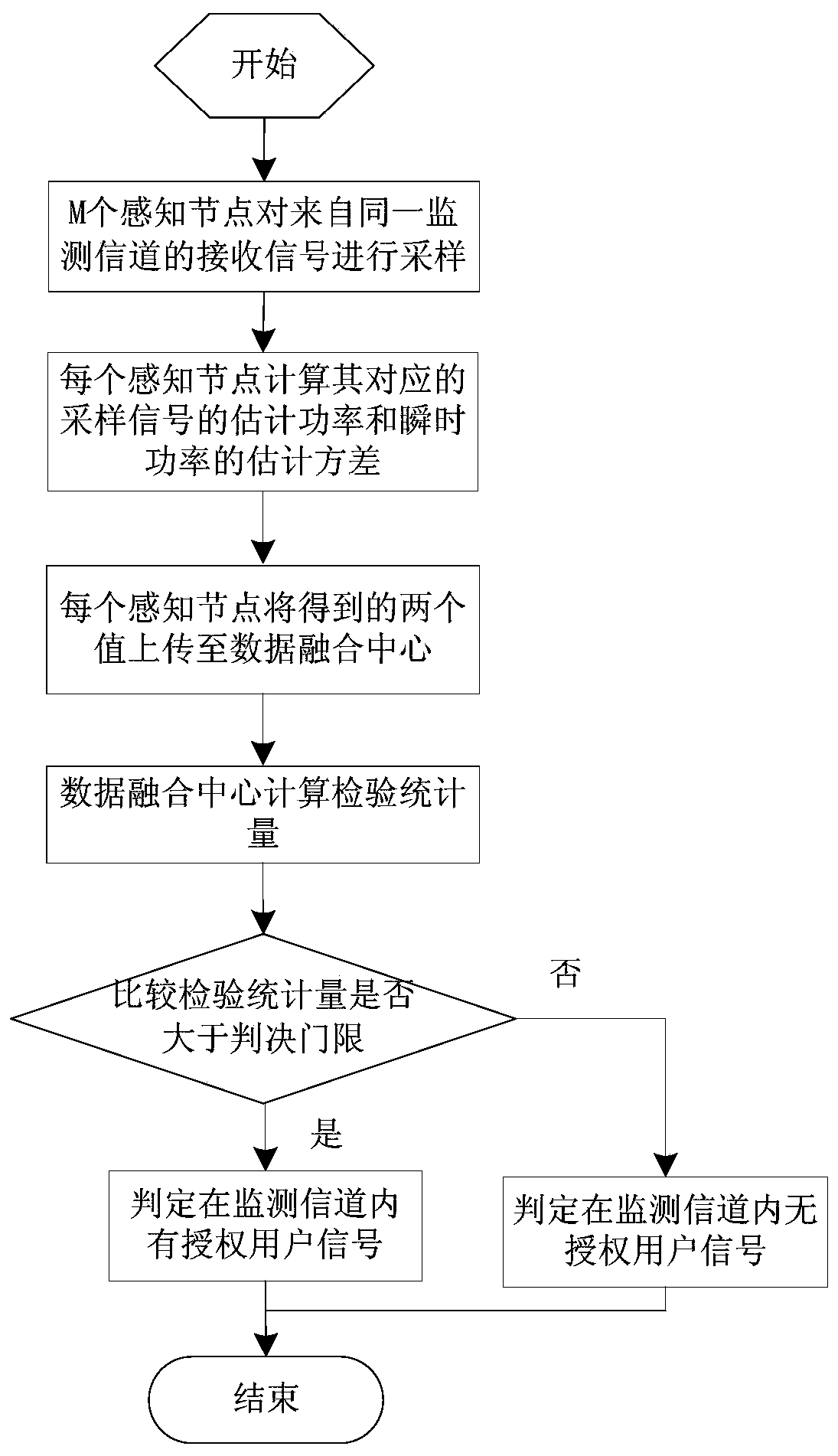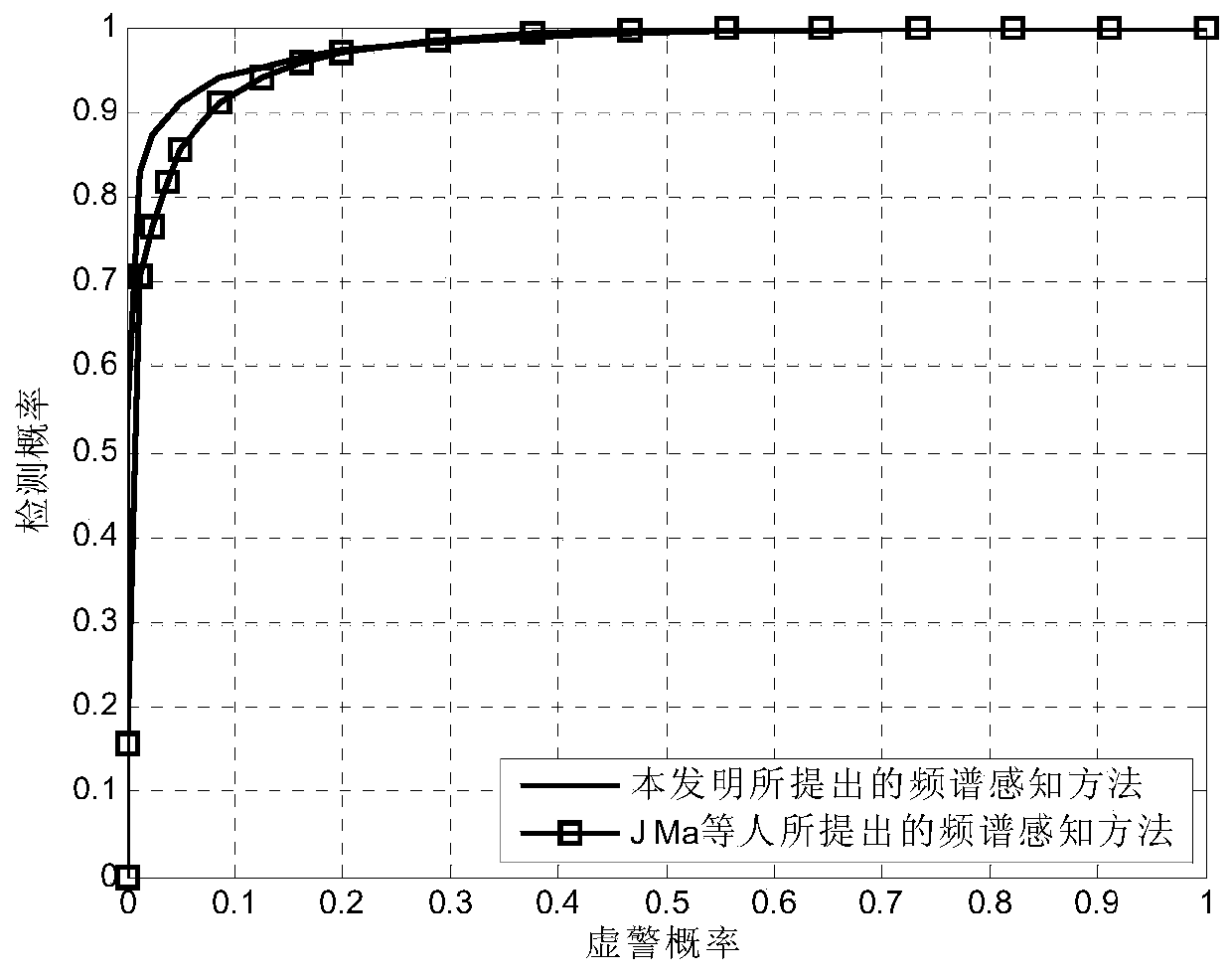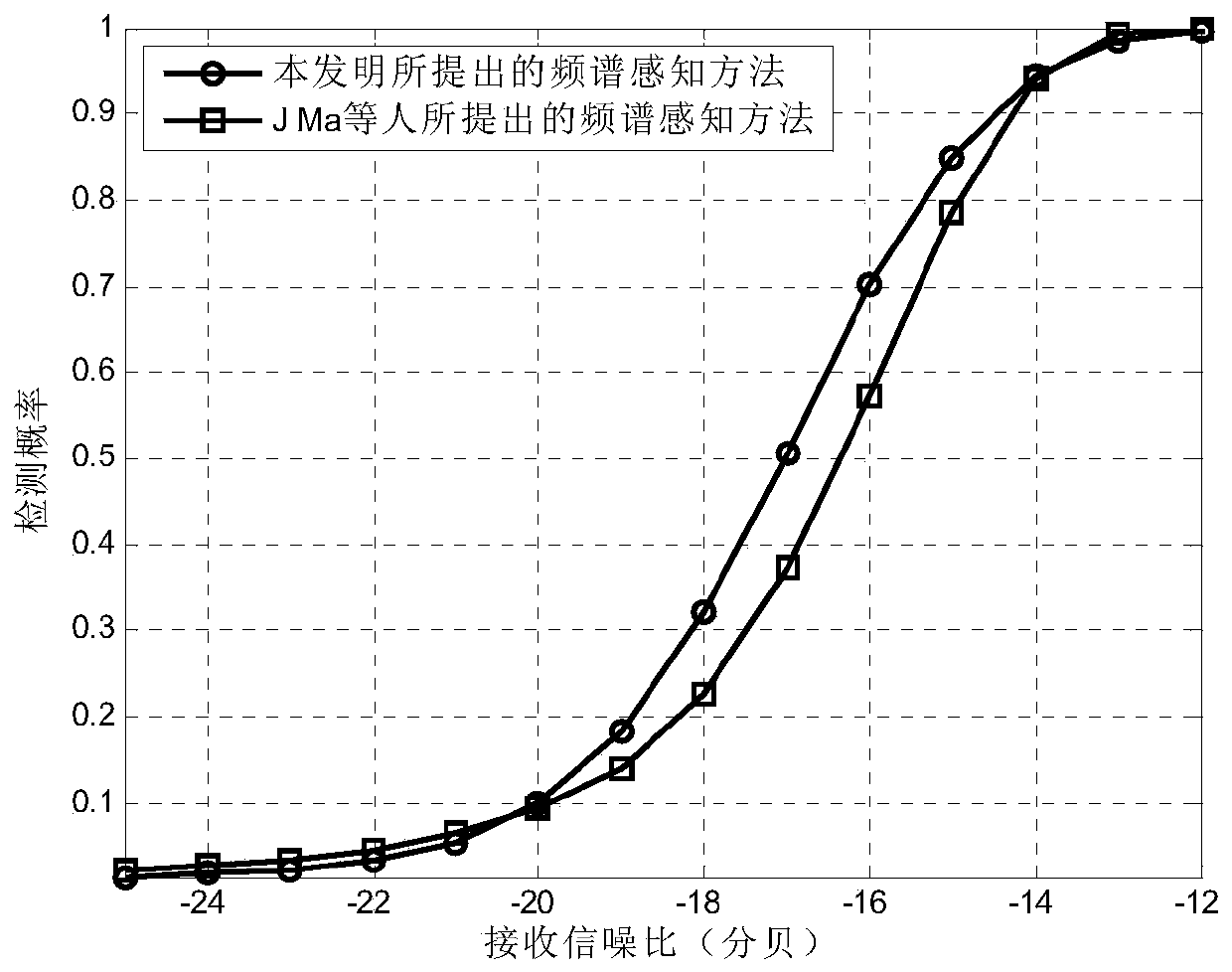A Blind Cooperative Spectrum Sensing Method Based on Soft Fusion Strategy
A cooperative spectrum sensing and soft fusion technology, applied in the field of blind cooperative spectrum sensing based on soft fusion strategy, can solve the problems of hidden terminal performance degradation, detection performance impact, etc., to overcome hidden terminal problems, low communication overhead, and improve spectrum sensing performance effect
- Summary
- Abstract
- Description
- Claims
- Application Information
AI Technical Summary
Problems solved by technology
Method used
Image
Examples
Embodiment Construction
[0023] The present invention will be further described in detail below in conjunction with the accompanying drawings and embodiments.
[0024] A blind cooperative spectrum sensing method based on soft fusion strategy proposed by the present invention, its flow chart is as follows figure 1 As shown, the processing process is as follows: first, the sampling module in each sensing node samples the received signal from the same monitoring channel to obtain the corresponding sampling signal of each sensing node; then, each sensing node calculates its corresponding sampling The estimated power of the signal and the estimated variance of the instantaneous power; then, each sensing node uploads the estimated power of the corresponding sampled signal and the estimated variance of the instantaneous power to the data fusion center, and the data fusion center calculates the test statistics; finally, the data fusion The center realizes spectrum sensing by comparing the test statistics with...
PUM
 Login to View More
Login to View More Abstract
Description
Claims
Application Information
 Login to View More
Login to View More - R&D
- Intellectual Property
- Life Sciences
- Materials
- Tech Scout
- Unparalleled Data Quality
- Higher Quality Content
- 60% Fewer Hallucinations
Browse by: Latest US Patents, China's latest patents, Technical Efficacy Thesaurus, Application Domain, Technology Topic, Popular Technical Reports.
© 2025 PatSnap. All rights reserved.Legal|Privacy policy|Modern Slavery Act Transparency Statement|Sitemap|About US| Contact US: help@patsnap.com



